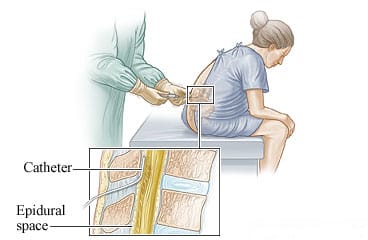Overview
A blood patch procedure uses your own blood to help your headache.
Headaches may happen after certain procedures that involve the spine, such as a myelogram or an epidural for anesthesia. In these procedures, the needle that is used sometimes causes a bit of spinal fluid to leak out of the space around your spinal cord. The leak usually isn't dangerous. But if enough fluid leaks out, it changes the pressure around your spinal cord. The pressure around your spinal cord can also change if fluid is removed for testing during a spinal tap (lumbar puncture). This change in pressure can cause a very bad headache.
To apply a blood patch, first your doctor takes blood from your arm. Then the blood is injected into the area of your lower back where the leak happened. The blood restores the pressure around your spinal cord. It also helps seal any leak that may still be there.
Many people feel better right away, but it could take a day or two. And a few people need to have a second blood patch.
Follow-up care is a key part of your treatment and safety. Be sure to make and go to all appointments, and call your doctor if you are having problems. It's also a good idea to know your test results and keep a list of the medicines you take.


